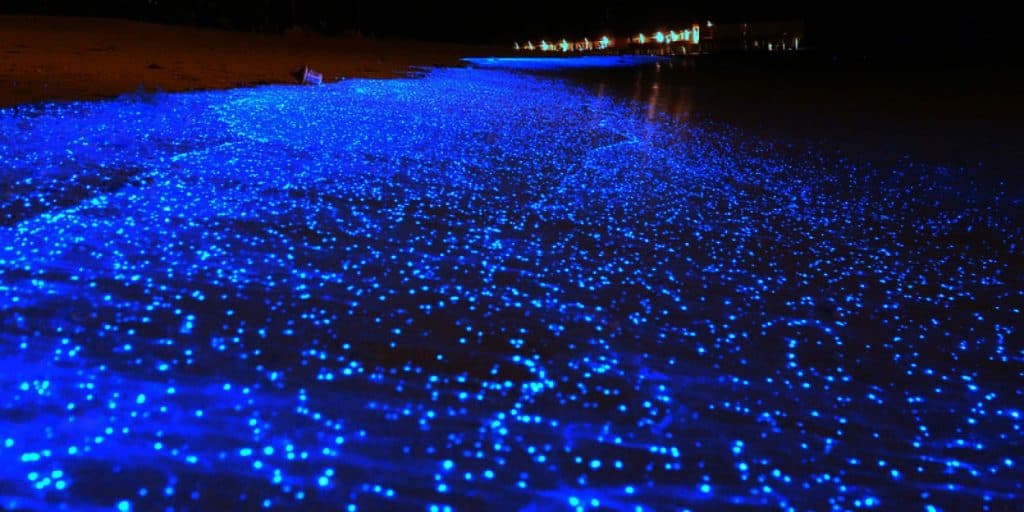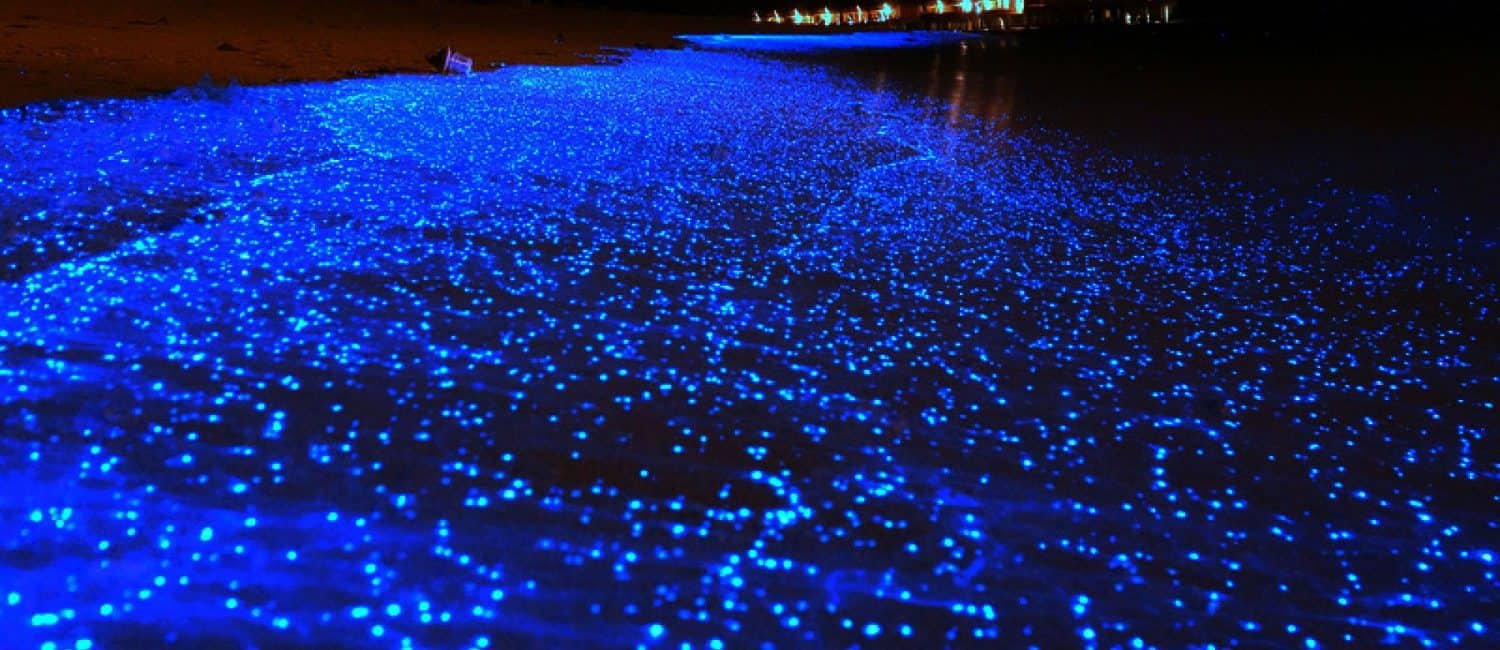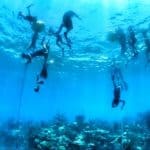The Maldives is a country known for its white-sand beaches and clear blue waters by the majority of the world population.
Tourists from across the globe travel to the popular holiday destination for an enjoyable, relaxing vacation. With the natural beauty of the islands covered with lush coconut groves and white sand, the marine life under the waves offers much to be explored.
The tropical nation consists of more than 1000 coral islands with exquisite aquatic life beneath the waves, which brings a natural phenomenon up to the shores. The beaches of the Maldives are known for ‘its sea of stars’ more commonly known as Bioluminescence.
Bioluminescence is the production and emission of light by a living organism. It occurs widely in marine vertebrates and invertebrates, as well as in some fungi, microorganisms including some bioluminescent bacteria, and terrestrial arthropods such as fireflies.
In this case, Bioluminescent plankton is said to wash up on the shores of the beaches causing the glow, but according to Cornell biology professor James Morin the organisms may actually be ‘ostracod crustaceans’. Referring to the organisms as phytoplankton is said to be a common misconception.
Ostracods emit light when something comes into the water, while phytoplankton emits light from their cells when they are stressed or there’s an unsettling in the water. Phytoplankton emits that bit of light when they are disturbed even slightly, by a passing kayak, a wave, or a hand simply touching the water, this is also known as the ‘firefly effect’. The glowing shores may seem unusual to see but are quite safe and are harmless.
The sight of the glowing beaches have been deemed quite rare to see, but are more likely to be seen during the mid-summer or winter season in the Maldives. There is an amazing diversity of sea life in the Maldives archipelago, with corals and over 2,000 species of fish, ranging from colorful reef fish to the Caribbean reef shark, moray eels, and a wide variety of rays: manta ray, stingray, and eagle ray. The Maldivian waters are also home to the whale shark.
Photo Credit: Wiki Maldives, perfect summer vacation blog 2017






